Showing Spotlights 1137 - 1144 of 2875 in category All (newest first):
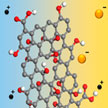 The commonly used separators in battery systems are porous polymer membranes, which separate the two electrodes while having little impact on the transportation of ions through the membrane. Polysulfides generated in a lithium-sulfur system can also diffuse freely through the membranes and react with a metal lithium anode, which results in the degradation of the battery's performance. If a novel, ion-selective but highly permeable separator can be developed, the shuttling of polysulfides and self-discharge would be effectively prevented, and both the energy density and power density of lithium-sulfur batteries could be significantly improved.
The commonly used separators in battery systems are porous polymer membranes, which separate the two electrodes while having little impact on the transportation of ions through the membrane. Polysulfides generated in a lithium-sulfur system can also diffuse freely through the membranes and react with a metal lithium anode, which results in the degradation of the battery's performance. If a novel, ion-selective but highly permeable separator can be developed, the shuttling of polysulfides and self-discharge would be effectively prevented, and both the energy density and power density of lithium-sulfur batteries could be significantly improved.
Mar 30th, 2015
 Novel materials designed and fabricated with the help of nanotechnologies offer the promise of radical technological development. Many of these will improve our quality of life, and develop our economies, but all will be measured against the overarching principle that we do not make some error, and harm ourselves and our environment by exposure to new forms of hazard. A publication explores recent developments in nanomaterials research, and possibilities for safe, practical and resource-efficient applications.
Novel materials designed and fabricated with the help of nanotechnologies offer the promise of radical technological development. Many of these will improve our quality of life, and develop our economies, but all will be measured against the overarching principle that we do not make some error, and harm ourselves and our environment by exposure to new forms of hazard. A publication explores recent developments in nanomaterials research, and possibilities for safe, practical and resource-efficient applications.
Mar 27th, 2015
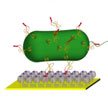 Supramolecular chemistry deals with molecular building-blocks that interact with each other in a dynamic manner, similar to what is seen in nature. Taking advantage of this, several 'smart' materials have been developed for biomedical applications by careful design of these building-blocks. These materials have especially interesting properties like self-healing and responsiveness to light and electricity. Researchers have now explored the possibility of developing a bacterial strain with the ability to interact dynamically with a popular supramolecular building-block.
Supramolecular chemistry deals with molecular building-blocks that interact with each other in a dynamic manner, similar to what is seen in nature. Taking advantage of this, several 'smart' materials have been developed for biomedical applications by careful design of these building-blocks. These materials have especially interesting properties like self-healing and responsiveness to light and electricity. Researchers have now explored the possibility of developing a bacterial strain with the ability to interact dynamically with a popular supramolecular building-block.
Mar 26th, 2015
 A novel nanoparticle blood test detects an overall increase of human immunoglobulin G (IgG), including the tumor-specific autoantibodies, adsorbed to a gold nanoparticle surface. While this test may not be able to identify the specific type of cancer, it may potentially be able to detect early stage tumor-induced immune responses associated with a broad spectrum of cancer types, making this test potentially a universal screening test for cancer risk assessment.
A novel nanoparticle blood test detects an overall increase of human immunoglobulin G (IgG), including the tumor-specific autoantibodies, adsorbed to a gold nanoparticle surface. While this test may not be able to identify the specific type of cancer, it may potentially be able to detect early stage tumor-induced immune responses associated with a broad spectrum of cancer types, making this test potentially a universal screening test for cancer risk assessment.
Mar 24th, 2015
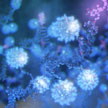 Typically, in clinical formulations of Magnetic Resonance Imaging (MRI) contrast agents, gram quantities of Gd(III) are needed to achieve sufficiently high contrast for examination. That's why the research imaging community is interested in developing new formulations of contrast agents able to bridge the gap between high contrast imaging of contrast agents dosed at low concentrations.
In new work, researchers report a new class of gold nanoconjugates that exhibit exceptionally high relaxivities at both low and high field strengths.
Typically, in clinical formulations of Magnetic Resonance Imaging (MRI) contrast agents, gram quantities of Gd(III) are needed to achieve sufficiently high contrast for examination. That's why the research imaging community is interested in developing new formulations of contrast agents able to bridge the gap between high contrast imaging of contrast agents dosed at low concentrations.
In new work, researchers report a new class of gold nanoconjugates that exhibit exceptionally high relaxivities at both low and high field strengths.
Mar 23rd, 2015
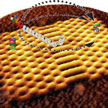 In new work, researchers have utilized diffusion as an effective transport mechanism for DNA nanotechnology. These findings contribute a new aspect to be considered for the design of future DNA motors, molecular machines, and nanorobots as they provide a simple way to transport molecules over distances of potentially several 100 nm; which is much faster than when using conventional DNA walkers or motors, which make many small and slow steps.
In new work, researchers have utilized diffusion as an effective transport mechanism for DNA nanotechnology. These findings contribute a new aspect to be considered for the design of future DNA motors, molecular machines, and nanorobots as they provide a simple way to transport molecules over distances of potentially several 100 nm; which is much faster than when using conventional DNA walkers or motors, which make many small and slow steps.
Mar 19th, 2015
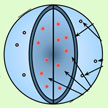 Trying to develop chemical free disinfection techniques, researchers are currently exploring the effectiveness of a nanotechnology based intervention method for the inactivation of foodborne and spoilage microorganisms on fresh produce and on food production surfaces. This method utilizes Engineered Water Nanostructures (EWNS) generated by electrospraying of water. These EWNS are 25 nm in diameter; remain airborne in indoor conditions for hours; contain Reactive Oxygen Species (ROS); have very strong surface charge (on average 10 electrons per structure) and have the ability to interact and inactivate pathogens by destroying their membrane.
Trying to develop chemical free disinfection techniques, researchers are currently exploring the effectiveness of a nanotechnology based intervention method for the inactivation of foodborne and spoilage microorganisms on fresh produce and on food production surfaces. This method utilizes Engineered Water Nanostructures (EWNS) generated by electrospraying of water. These EWNS are 25 nm in diameter; remain airborne in indoor conditions for hours; contain Reactive Oxygen Species (ROS); have very strong surface charge (on average 10 electrons per structure) and have the ability to interact and inactivate pathogens by destroying their membrane.
Mar 16th, 2015
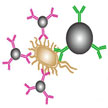 Researchers have developed a magnetic bead based sensor that combines magnetic separation (MS) and magnetic relaxation switch (MRS) for one-step detection of bacteria and viruses with high sensitivity and reproducibility. Compared to conventional assays for detection of bacteria and viruses, this novel MS-MRS assay is easy to operate without laborious pre-treatment, purification and can be adaptable to point-of-care tests easily.
Researchers have developed a magnetic bead based sensor that combines magnetic separation (MS) and magnetic relaxation switch (MRS) for one-step detection of bacteria and viruses with high sensitivity and reproducibility. Compared to conventional assays for detection of bacteria and viruses, this novel MS-MRS assay is easy to operate without laborious pre-treatment, purification and can be adaptable to point-of-care tests easily.
Mar 13th, 2015
 The commonly used separators in battery systems are porous polymer membranes, which separate the two electrodes while having little impact on the transportation of ions through the membrane. Polysulfides generated in a lithium-sulfur system can also diffuse freely through the membranes and react with a metal lithium anode, which results in the degradation of the battery's performance. If a novel, ion-selective but highly permeable separator can be developed, the shuttling of polysulfides and self-discharge would be effectively prevented, and both the energy density and power density of lithium-sulfur batteries could be significantly improved.
The commonly used separators in battery systems are porous polymer membranes, which separate the two electrodes while having little impact on the transportation of ions through the membrane. Polysulfides generated in a lithium-sulfur system can also diffuse freely through the membranes and react with a metal lithium anode, which results in the degradation of the battery's performance. If a novel, ion-selective but highly permeable separator can be developed, the shuttling of polysulfides and self-discharge would be effectively prevented, and both the energy density and power density of lithium-sulfur batteries could be significantly improved.
 Subscribe to our Nanotechnology Spotlight feed
Subscribe to our Nanotechnology Spotlight feed





